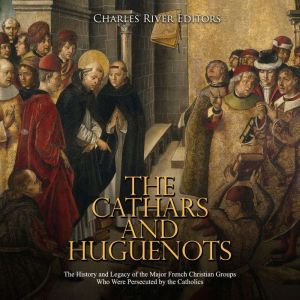
List: $9.95
| Sale: $6.96
Club: $4.97
The Cathars and Huguenots: The History and Legacy of the Major French Christian Groups Who Were Persecuted by the Catholics
Author: Charles River Editors
Narrator: Jim D. Johnston
Unabridged: 3 hr 25 min
Format: Digital Audiobook Download
Publisher: Charles River Editors
Published: 04/22/2023
Category: Religion - Christianity
Synopsis
Carcassonne today is the capital of the Aude department in the Occitanie region of southwestern France, about 58 miles from Toulouse. This land is also home to several legends and local traditions. When the earth is drenched by heavy storms, the crumbling red soil drifts into the River Aude, staining the water with crimson. This beautiful, yet haunting phenomenon, which the locals call the “blood of the Cathars,” is a symbolic reminder of the blood shed by these “heretics” at the hands of the Catholic Church. Despite the controversial events, and their supposed heresy, it seemed that the fall of the Cathars brought an everlasting curse upon the region.In the 16th century, corruption, debauchery, and the general perversion of ethics were running rampant within the Roman Catholic Church. The public began to grow leery of the crooked church, and soon, they could no longer bite their tongues. Among the church's most vocal opponents was Martin Luther, whose publication of the 95 Theses gave rise to the Protestant movement. This reformed brand of Christianity gradually spread throughout Europe, planting flags across the continent. France was among the first to latch onto the movement, and these new-wave Protestants became known as the “Huguenots.” The exact origins of the Huguenot name is still disputed to this day, but most historians have agreed it is a French and German translation of the Swiss-German term, “eidgenossen,” meaning “oath-fellowship.” The Huguenots mostly resided in the southern regions of France, along with the northern regions of Normandy and Picardy. They shared quite a few similarities with the Protestant Walloons, who lived in what is now Belgium, but the two groups were unique communities. Even so, both groups frequently convened to worship together as refugees.